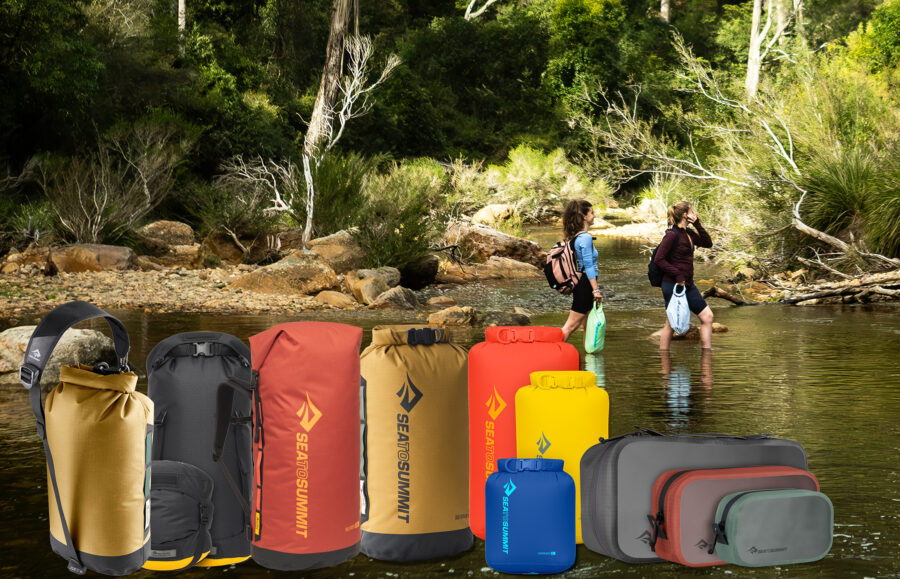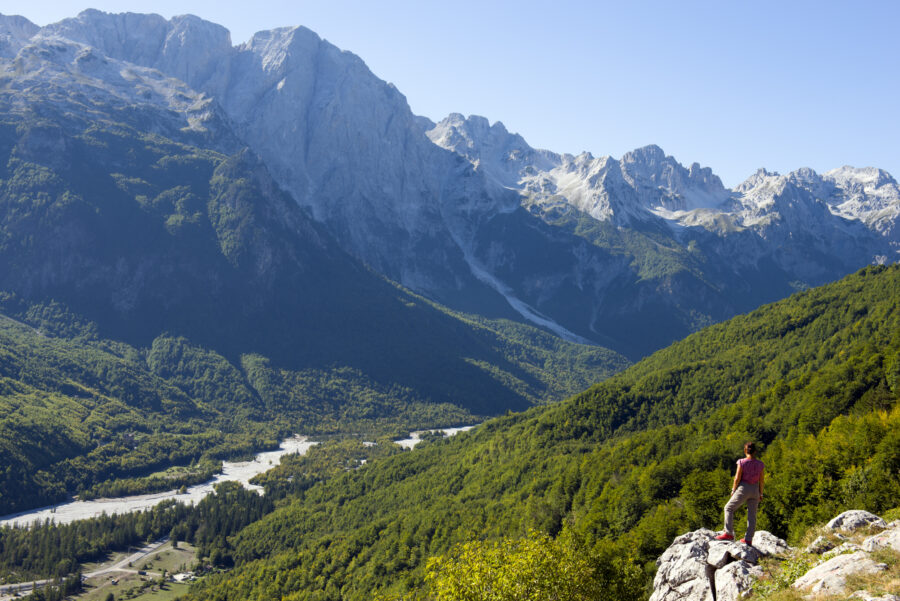Sea to Summit four-season sleep system: Tested

I’ve got to be real with you. I’ve frozen my toes on a frozen ocean in the Arctic, flirted with frostbite in Patagonia’s sideways rain, and spent countless nights camped on frozen ground everywhere from Alaska to Kiwi-land’s epic glaciers and back to where it all started in the 90s – atop NSW’s main range in winter. I say this to suggest that I’m most definitely no stranger to cold-weather misery. But here’s the caveat: this winter I cheated. While the Aussie Alps copped their usual storms, I busted off to drink sangria under the European sun. I got used to a blazing sun and warm Mediterranean waters – so when I finally landed back home and Sea to Summit handed me its latest and greatest – the Spark -9 °C sleeping bag, Reactor fleece liner, Aeros Down Pillow, and the brand-new Ether Light XR Pro Insulated Mat – I was just as excited as I was hesitant about returning to the world of spiced whisky and hoar frost.
Then I went and sabotaged my own comeback, grabbing the wrong tent on one of the warmest nights of our soggy winter. The plan was simple: a “first date” with some ultra-light four-season kit – head out on the Great North Walk, snap a few photos, pour a glass (well, a can) of red, and pick it apart under the glow of a headtorch. Hardly a sufferfest, but it’s nice to know the kit is gonna work before heading out into the proper wilds.

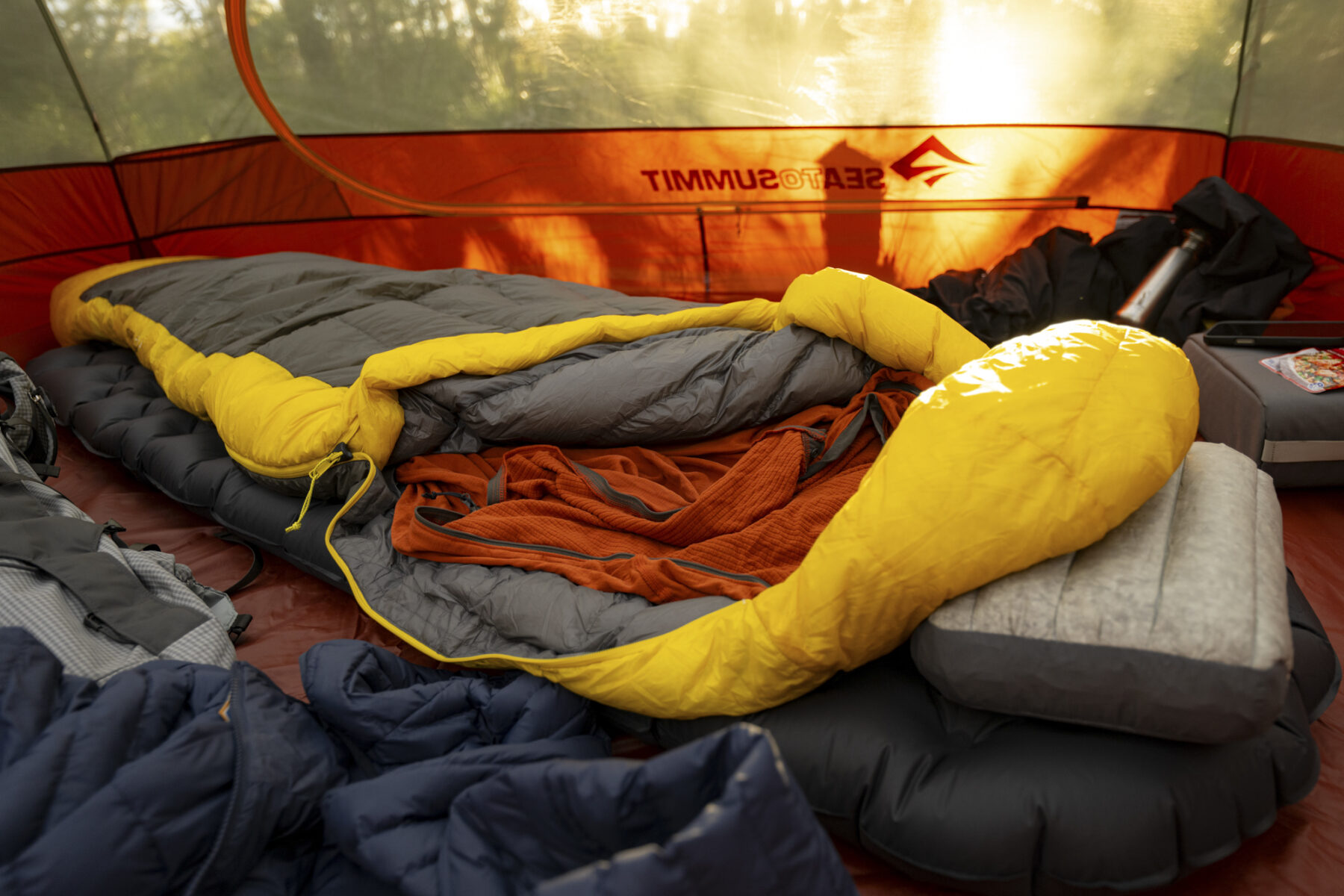
How I ended up with Sea to Summit’s Ikos 3 tent is a mystery… Okay, maybe not. Instead of a wispy alpine den on ice, I semi-mistakenly grabbed a penthouse suite on poles for a balmy sunset. The Ikos 3 had been sitting at the back of the car from a previous trip, and I hadn’t thought to check. Slotting an ultra-light four-season setup into the luxurious Ikos was like trying to heat a cathedral with a candle, but at least it gave me space to sprawl, tinker with the gear, and dive into the specs. The true test of the system’s durability would come later in freezing conditions in the sub-alpine.
The good news: I needed little convincing as to the toasty-toe capabilities of the Spark sleeping bag. It’s been my ‘go-to’ for alpine adventures over the past few years. My old one was the -15 °C iteration, but this time I had the -9 °C. Few bags match its warmth-to-weight ratio. Pair it with a Reactor liner, like I do, and you’ve got a proper four-season system, for Australia and well beyond.
But (drum roll please) the real news here is the Ether Light XR Pro. In my humble opinion, Sea to Summit’s past sleeping mats have been the weakest link in its cold-weather setup. Therm-a-Rest or Nemo have been the go-to for most above-snowline antics. It’s not that I didn’t love the Ether Light XT; it was incredibly comfy, but it just didn’t cut it in terms of size, warmth, and durability compared to the competition. So, seeing Sea to Summit show up to the 2025 four-season R-value party with a mat boasting a serious 7.4 insulation rating (that’s proper alpine-level insulation, for those new to the jargon) feels like real progress. In the process, they’ve also managed to reduce the packed size and strengthen the welds. Chuck in the Aeros Down pillow, and now we’ve got proper winter luxury.
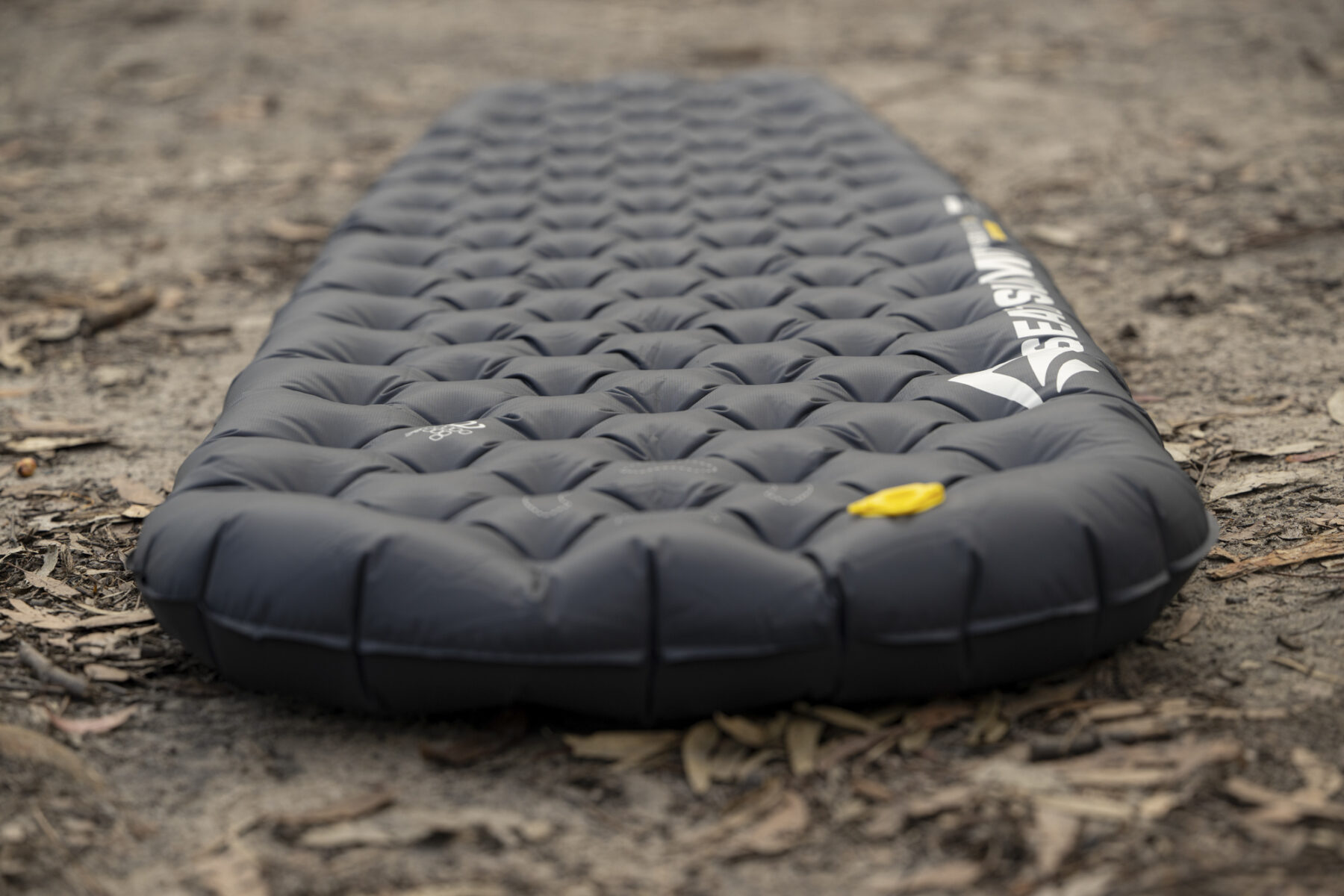
Now, I haven’t dragged it across the Arctic just yet, but I have managed to score a few water bottle freezing moments on frigid winter nights to remember why this stuff matters – and confirm the system performs better than ever before. Come spring, I’ll hopefully head into the frozen stuff for longer. But for now, here are my early impressions.
Design
Let’s start from the ground up, because that’s where winter comfort is won or lost.
Sea to Summit’s new Ether Light XR Pro Insulated Air Sleeping Mat is the anchor of this system. It uses the brand’s familiar Air Sprung Cell construction – independent chambers that deform individually to reduce pressure points – but here they’re built into a full 10 cm thickness, the deepest mat amongst the usual suspects in the four-season lineup. Inside, multiple layers of TRM reflective ThermalCore insulation slow conductive heat loss and reflect infrared energy. That delivers a tested R-value of 7.4, the highest of any Sea to Summit sleeping mat to date, with one of the best warmth-to-weight ratios it’s achieved.
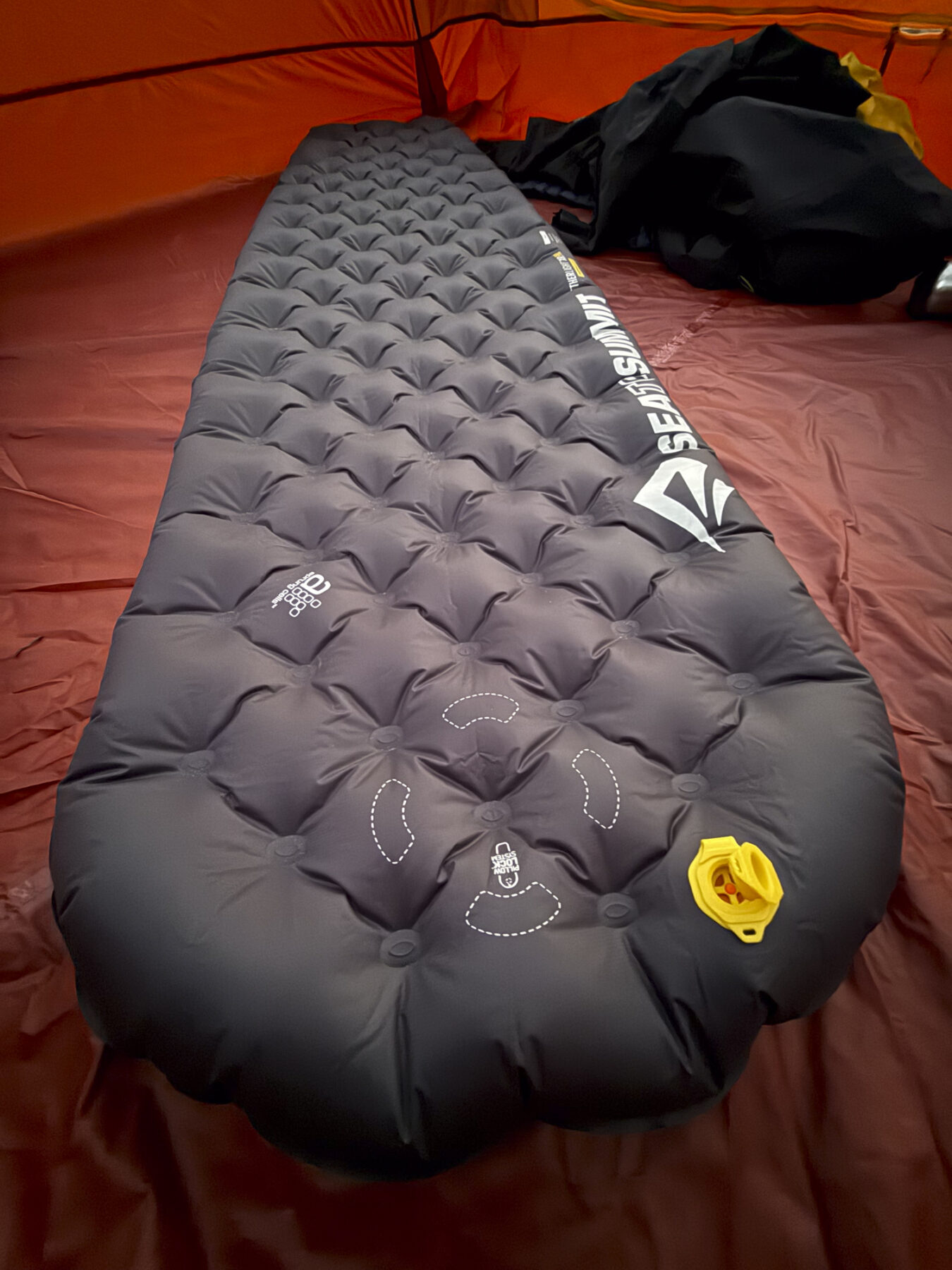
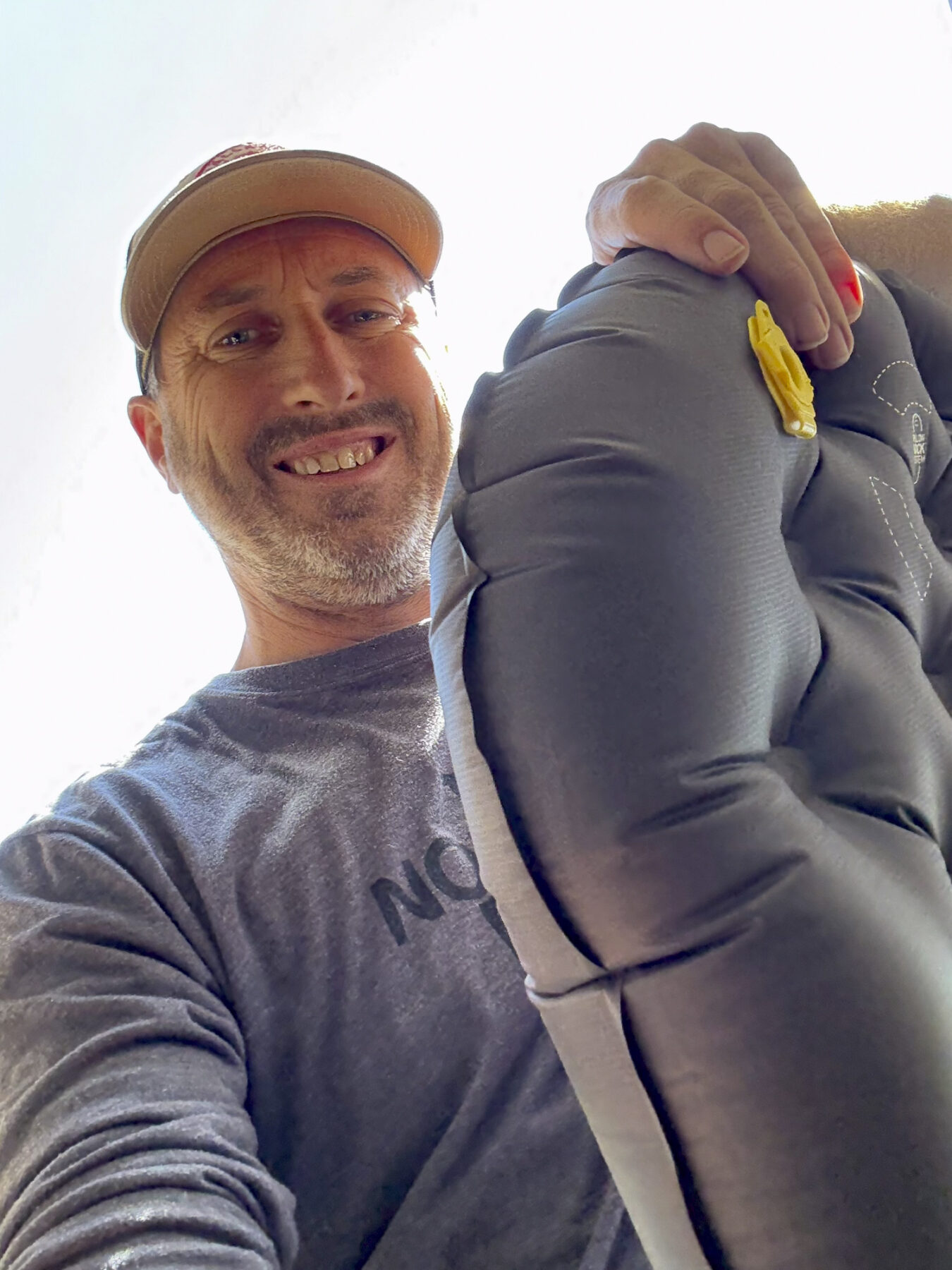
It also takes up less pack-space: the XR Pro is 25% lighter and packs to half the volume of the previous Ether Light mats, thanks to the new construction. Welds are laminated and rated 200% stronger, while the 30D nylon top / 40D nylon base fabric strikes a balance between toughness and packability. The mat uses the XPRESS valve for fast inflation and deflation, and the Airstream pump-sack integrated into the stuff sack does the heavy lifting for inflation and does it well. Dimensions are 183 × 55 × 10cm (Regular), packed size 21 × 12cm, and weight 560g. A patch kit is included for emergency repairs and Sea to Summit’s PillowLock patches are also included to stop your head support from migrating at 2 a.m.
It is available in three sizes: Regular: 183 × 55 × 10 cm, 560g, packed size 21 × 12 cm, Large: 198 × 64 × 10 cm, 720g, packed size 24 × 12.5 cm and a Rectangular Wide / Rectangular Large: same lengths, but rectangular so a fixed 64 cm width from head to toe, weight up to 790g.
Moving up the system, the Spark -9 °C Down Sleeping Bag is the centrepiece. It’s insulated with RDS-certified 850+ loft goose down, treated with Ultra-Dry Down – a non-PFAS water-repellent treatment that resists moisture absorption and maintains loft in damp conditions. The 10D recycled nylon shell and liner are ultralight yet breathable, both finished with a PFC-free DWR for extra resistance around the hood and footbox.
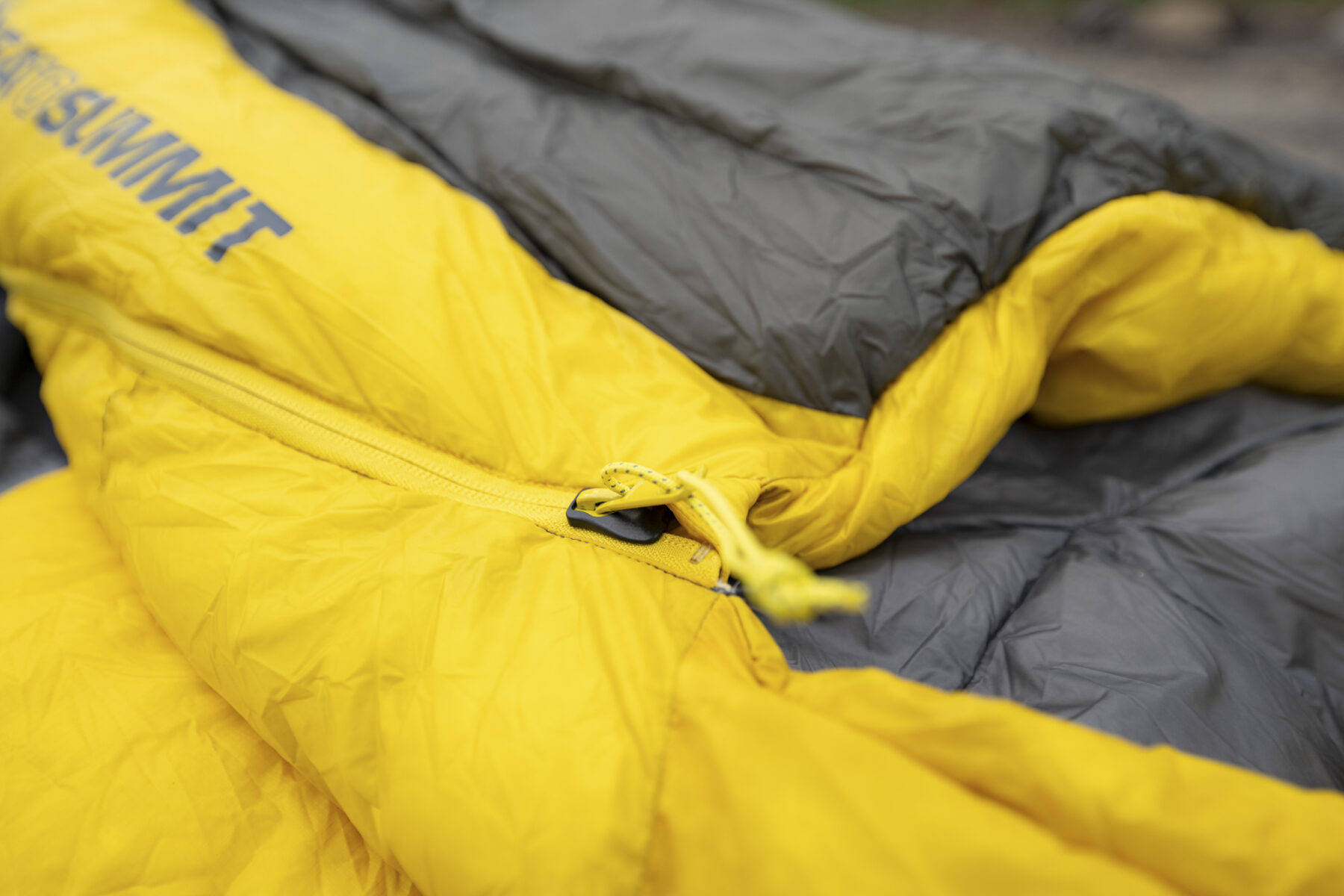

Construction is tuned for warmth at minimum weight: the -9 °C version uses full box baffles throughout to maximise loft, paired with an anatomical mummy cut that trims dead space while still leaving enough room at the shoulders and in the box-wall footbox. A technical hood cinches down cleanly, while dual half-length YKK zips provide venting and prevent snags. Fill weight is 480g of down (Regular), total bag weight 730g, compressing down to 6.8L in its siliconised compression sack. Ratings: comfort –2 °C, limit –9 °C.
There are four models in the Spark Range: 7 °C, -1 °C, -9 °C, and -18 °C. And two sizes are available: Regular is for users up to 185 cm in height, while the Long size fits users up to 198 cm in height. The Longer version of the –9 °C weighs 56g more than the regular, but carries an extra 60g of down.
To extend that range, the Reactor Fleece Liner builds in extra warmth with Thermolite EcoMade hollow-core fibres arranged in a grid fleece pattern. The result is warmth retention with breathability, plus a softer feel than standard Thermolite. At 390g, it features a drawcord footbox, cinch hood, and dual shoulder zips with snap fasteners that function like straps, allowing you to keep the liner on while freeing your arms or feet for camp chores. The mummy shape matches the Spark closely for increased thermal efficiency, and the liner is treated with HeiQ Fresh odour control to stay usable on longer trips. Pack size is about 15 × 11cm. It also comes in two sizes: compact is 198 x 80cm, and the large is a spacious 216 x 80cm.

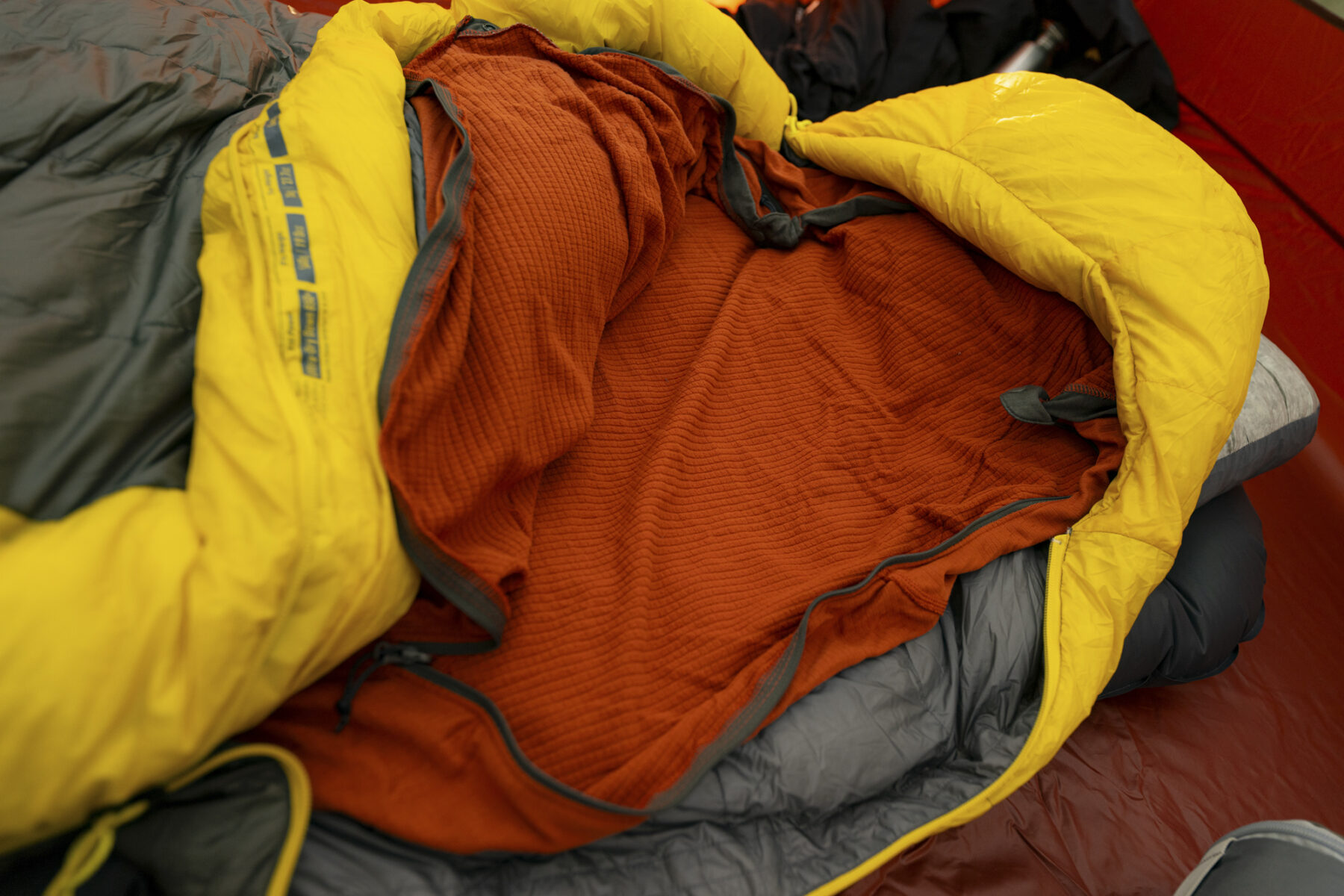
Finally, the Aeros Down Pillow combines a soft, silent TPU air bladder with a premium down-filled cushion top and a brushed 20D polyester face fabric. It inflates in just a few breaths, with fine-tuning via the multi-function valve. The underside is made of lighter, plain-weave polyester, and Sea to Summit’s PillowLock keeps it securely attached to their mats. Available in multiple sizes, most compressing smaller than a fist. Sizes are Regular: 34 × 24 × 12cm, 70g, packed size 8 × 6.5cm; Large: 42 × 28 × 12cm, 95g, packed size 9 × 7cm; and Deluxe: 59 × 38 × 12 cm, 190g, packed size 8 × 14cm.

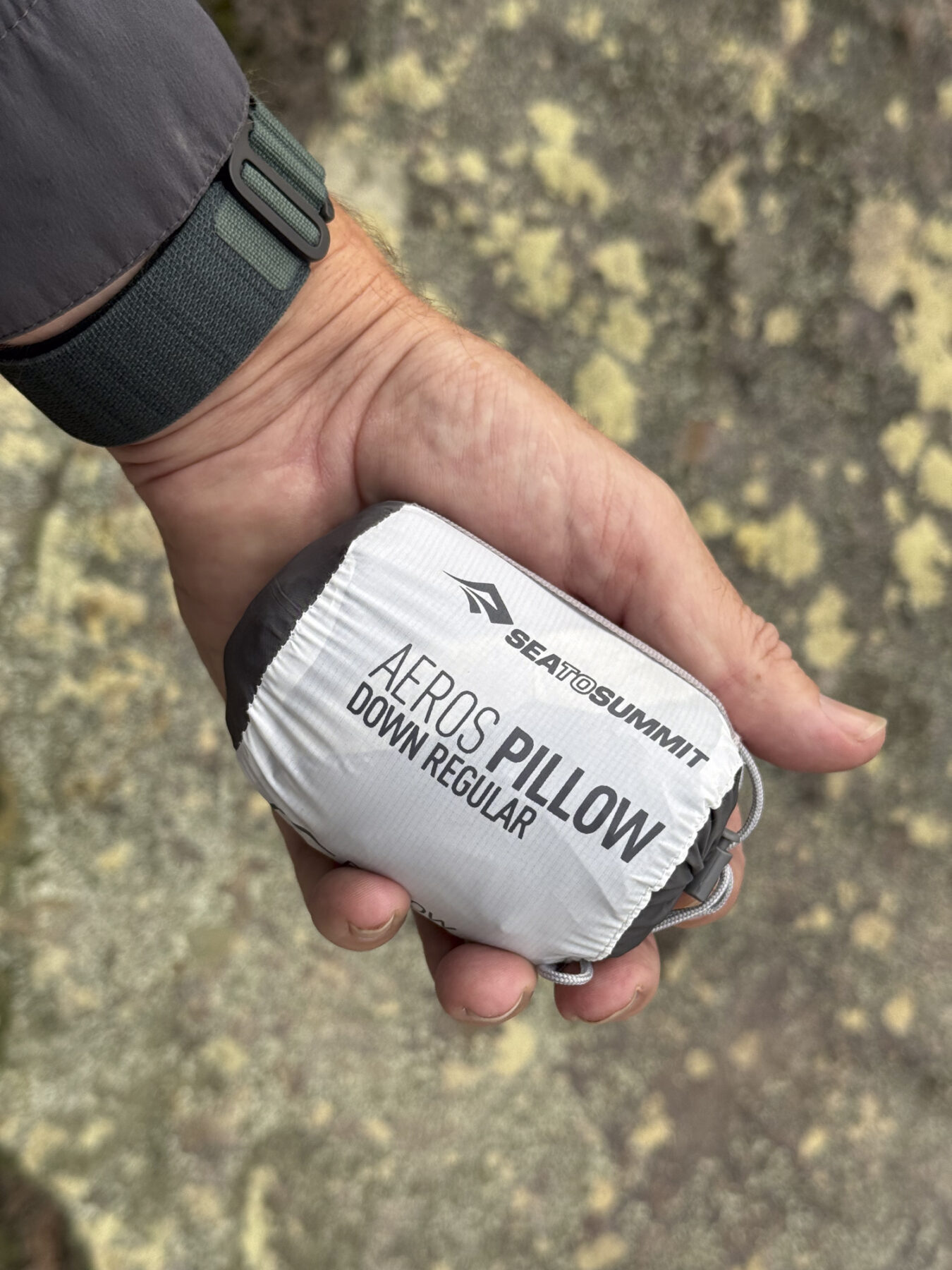
Taken together, the design language across all four products is consistent: responsibly sourced high-loft down, ultralight fabrics, durability where it counts, effective insulation layering, and PFC-free treatments. On paper, the combo is the most technically complete cold-weather sleep system Sea to Summit has ever produced.
In the field
We’ve had this system out in a mix of conditions – from a balmy winter’s night on NSW’s Great North Walk to the frost of sub-alpine chill further south in Victoria’s High Country. And straight away, the standout is the Ether Light XR Pro mat.
In recent years, Sea to Summit’s mats were its (relatively) weak link when it came to serious four-season antics. Not anymore. With a full 10cm thickness and trendy internal materials boosting insulation dramatically, the Ether Light XR Pro finally justifies the four-season tag. At R 7.4, it’s legitimately winter-ready. It’s a smidge heavier than some others, but for me, the 55cm at the shoulders is worth the extra grams if it keeps me from feeling like I’m balancing on a high line all night. And the value is impossible to ignore. At $349, it’s one of the best bang-for-buck winter mats in the Australian market, and I’ve even seen it cheaper online on sale. Therm-a-Rest’s NeoAir XTherm NXT is lighter (440g) but narrower and thinner; Nemo’s Tensor Extreme Conditions is warmer on paper (R 8.5) but slimmer at 7.6 cm and built with lighter 20D fabrics.

The XR Pro falls in between: sturdier than Nemo, not as featherlight as Therm-a-Rest, but with more room and plushness than both. Comfort-wise, it’s thick, stable, and – mercifully – not a noisy, crinkly nightmare like some mats. Don’t get me wrong; it’s not a whisper-quiet mat, but it is about as loud as you’d expect from an ultralight pad with reflective insulation. That’s the trade-off for high R-values and low weight. Sure, it rustles a bit when you shift around, but after a long day, you’ll barely notice.
The valve system is another highlight. The yellow XPRESS valve is fantastic – easy to inflate, simple to fine-tune, and quick to dump air in the morning. It took us around 4–5 pump sacks to fill (about a minute, depending on how lazy we were). For the super-lazy, a Flextail Zero Pump knocks that down to around 45 seconds and spares you a few breaths – not essential, but a nice luxury after a long day on the trail or in the mountains. Pop the bottom cover, and the whole mat deflates in seconds. And, finally, the PillowLock system works (basically sticky hook and loop tabs), keeping the head support in place all night.
Downsides of the XR Pro? The Airstream pump sack (that’s the technical name for the stuff sack/pump combo) does its job brilliantly, but if you prefer a mini pump, then there’s no way to remove the inflation sack. It’s not a big deal, but it’s worth thinking about. My biggest bugbear, however, is so stupid it’s hardly worth mentioning – yet I will. There’s nowhere to stash the tiny repair kit – the kit tends to fall out when you first get your mat, and you never see it again. Sea to Summit: Please give us a small pocket so it stays with the pad and doesn’t wander off. Finally, the XR Pro is nearly 100g heavier than the lightest competition, which may frustrate ultralight purists, but we could also skip that last craft beer at the pub the week before we hit the trail.

Quibbles aside, the mat is only half the story – pairing it with the right bag makes or breaks the whole system.
The Spark -9 °C sleeping bag is the known quantity in this lineup, and it still punches well above its 730g weight (Regular). High-loft 850+ Ultra-Dry Down in a 10D recycled nylon shell with PFC-free DWR makes it warm, light, and impressively compact – it stuffs into a silicon-lined compression sack about the size of a loaf of bread. At 188cm, I opted for the Long, a mere 56-gram sacrifice compared to the regular, but importantly, it provides that extra length and shoulder room without leaving too much dead air to heat. The hood seals well, the snap-lock on the zip keeps everything in place, and the box-wall footbox leaves room for down booties on icy nights.
But here’s the important bit: don’t confuse the lower-limit rating of –9 °C with all-night comfort in proper sub-zero conditions. The comfort rating is closer to –2 °C, making this bag ideal for three-season use and extending into the four-season arena – but not necessarily reliable above the snow line in Tasmania or the Australian Alps (or other similar regions). For cold sleepers or genuine alpine trips, I recommend stepping up to the Spark -18 °C (comfort rating: –10 °C, lower limit: –18 °C). That bag is better suited to regular sub-zero alpine conditions. Warm sleepers might stretch the -9 into light snow with the XR Pro mat and Reactor liner, but for most people, this model sits neatly in the three/four-season category, rather than being a full alpine specialist.
The Reactor Fleece Liner is an underrated hero. It adds a good few degrees of comfort to your sleep system (depending on how you sleep). Some reviewers claim up to 8 °C, but I’d suggest it shifts your -2 °C comfort level closer to -5 °C or -6 °C. It slides neatly inside the Spark, with the zips and clasps lining up, so it feels like part of the bag rather than an afterthought.
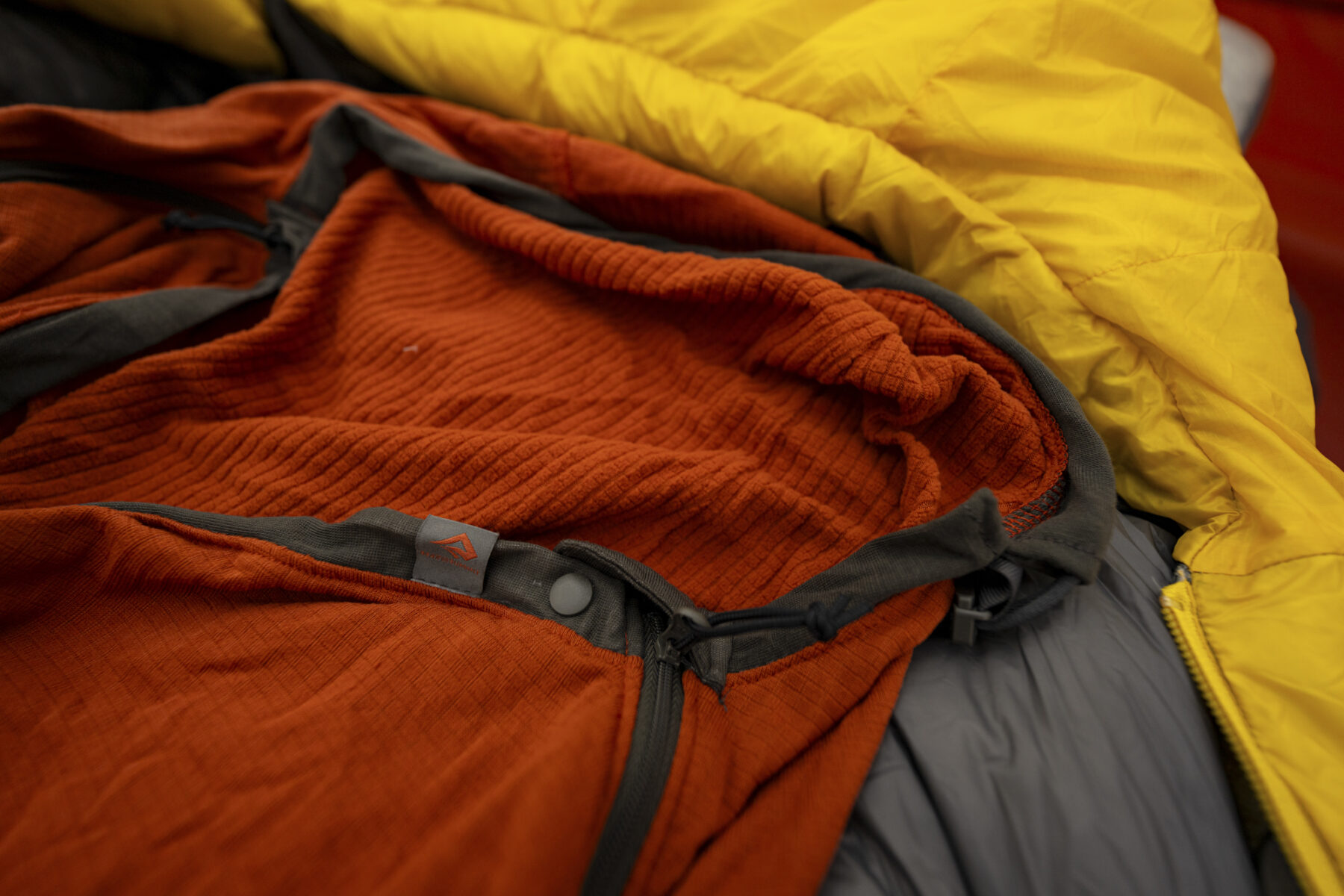
The fleece liner isn’t just for extra warmth – it’s surprisingly versatile. Dual shoulder zips with snap fasteners let you wear it almost like a jacket, so you can cook in your tent vestibule or shuffle around camp without wriggling out of your sleeping bag. It even has its own hood, which lines up nicely with the Spark’s and adds a bit of extra insulation around your face.
The trade-off is bulk: it packs larger than the Ether Pro mat and comes only with a stuff sack, not a compression sack. In practice, pairing it with the Spark -9 °C pushes the setup closer in weight, price, and warmth to the heavier Spark -18 °C, though it doesn’t quite match the same cold-weather comfort. Still, the liner gives you a more flexible, year-round system. It’s light, soft, and easy to squash into the bottom of your pack – just be prepared to carry a chunk of fleece. The bonus is protection: instead of washing a down bag (a slow, awkward job involving tennis balls in the dryer), you can just throw the liner in the wash after every trip.
And finally, we have the Aeros Down Pillow. Honestly, it’s one of those luxuries that quickly stops feeling like a luxury and becomes more of a necessity the more you use it. The down top makes it soft and quite toasty. The PillowLock compatibility prevents it from migrating everywhere but under your head, and at 70–95 g, depending on size for the Regular/Large, it’s not exactly breaking the scales. The large feels a smidge small (I wouldn’t go down a size), so if I were chasing ultimate comfort, I’d probably choose the Deluxe, but the extra 100g for the mothership feels hard to justify if you’re really counting grams.
The final word (for now)
Taken as a whole, this system demonstrates that the Sea to Summit team is listening to their users. It’s warm, comfortable, responsibly built, and – most importantly – priced so that three/four-season performance isn’t just for the gram-counters and gear elitists. The new Ether Light XR Pro finally drags the brand’s mats into true alpine territory. The Spark -9 °C bag is light, compact, and I’ve loved the Sparks for years – but let’s be clear: it’s more of a three-season to “light winter” bag than an all-out four-season workhorse. Add the Reactor liner and you squeeze out a few more degrees, but you’re also bulking up. Personally, as a self-confessed cold sleeper, I’d rather carry the heavier, warmer Spark -18 °C and know I can vent if it’s too much, than gamble on shivering through a night.

And yes, I initially paired it all with the wrong tent for my first look mishap – which is a reminder that a “system” only works if the parts align. For me, the mat’s alpine-level R-value deserves to be paired with the coldest Spark, the Extreme liner, and a proper four-season tent. Do that, and Sea to Summit has a full quiver that certainly holds its own against the best. As it stands, this setup is brilliant for Tassie winters, alpine hiking, spring touring missions or chilly expeditions where pack weight matters.
What’s it cost?
Sea to Summit Ether Light XR Pro Insulated Air Sleeping Mat: $379.99
Sea to Summit Spark -9 Down Sleeping Bag: $799.99
Sea to Summit Reactor Fleece Liner: $149.99Sea to Summit Aeros Down Pillow: $139.99
Go to Sea to Summit for more info on all its sleep systems.
